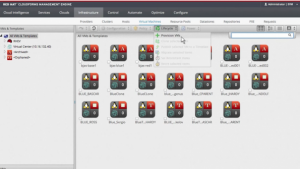
With last week’s release of Red Hat CloudForms 4.2, open source’s biggest success story ups its game to help it gain more traction in the cloud. The features added since the last release of the cloud management platform indicate the company isn’t so much focused on either public or private clouds, but on the whole hybrid cloud enchilada. What Red Hat is after — in the long run — is to create an integrated base containing most, if not all, of the tools that might be needed in a complex public/private cloud infrastructure that includes containers, virtual machines and other complexities.
“There is no longer a ‘one-size-fits-all’ IT environment, as many organizations are seeking to leverage the best benefits of physical, virtual and cloud-based technologies,” Joe Fitzgerald, Red Hat’s vice president of management, said. “Coupled with Linux containers, only managing one or two aspects of these hybrid computing environments can lead to downtime or outages.”
On the private cloud side, CloudForms has added support for OpenStack’s Swift and Cinder storage technologies. It has also expanded the chargeback capabilities for containers running on Red Hat’s OpenShift Container Platform. Support has been added as well for the company’s JBoss middleware, as part of a “tech preview” of CloudForms’ Middleware Provider, which will be expanded in upcoming versions.
There is also increased integration with the public cloud. “The providers for Amazon Web Services (AWS), Microsoft Azure and Google Cloud Platform now include full networking providers,” Marty Wesley, Red Hat’s senior product marketing manager, wrote in a day-of-release blog post. “This means that you can get a complete inventory of networking entities such as Networks, Subnets, Routers, Floating IPs, Network Ports and Load Balancers.”
